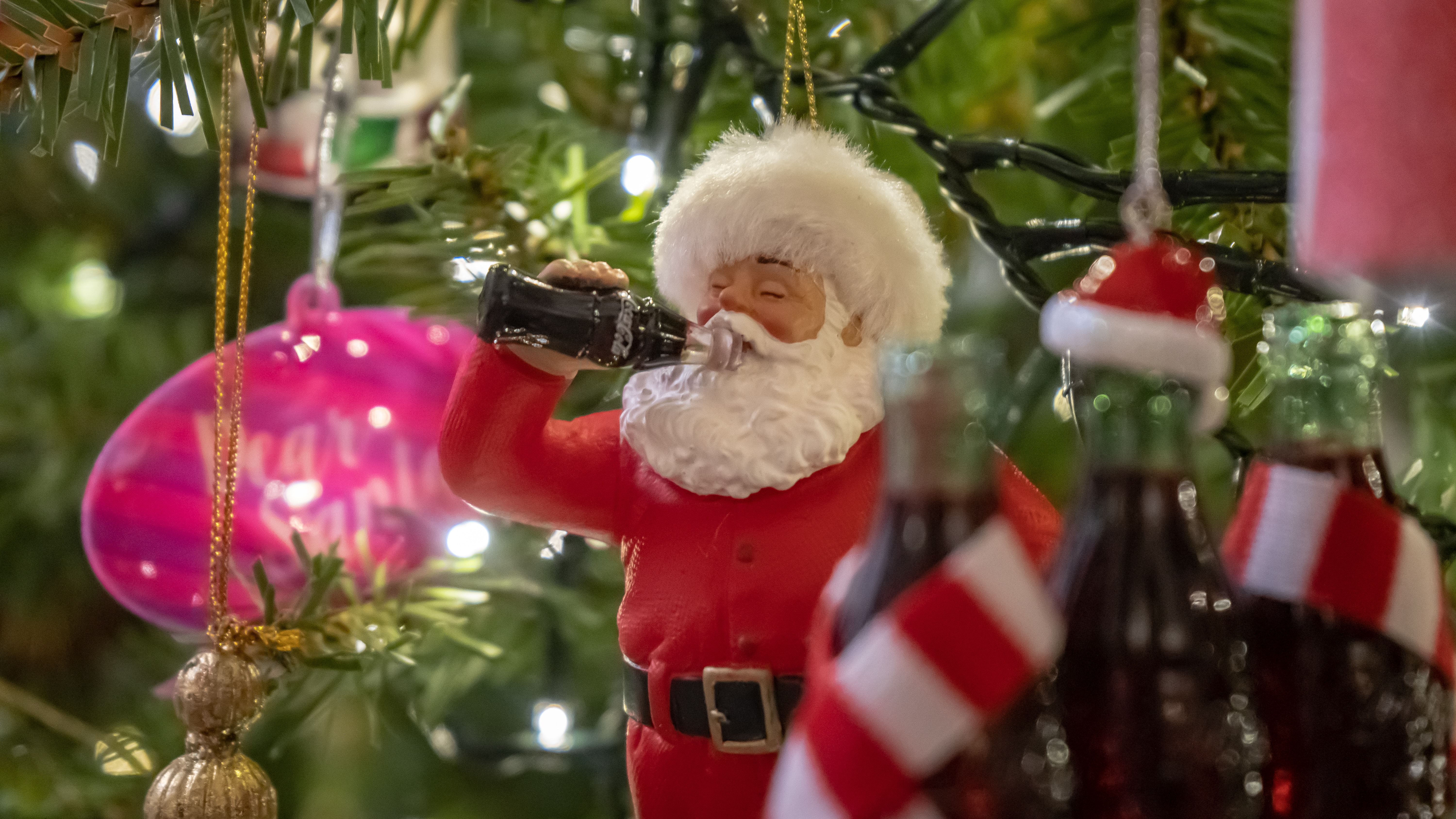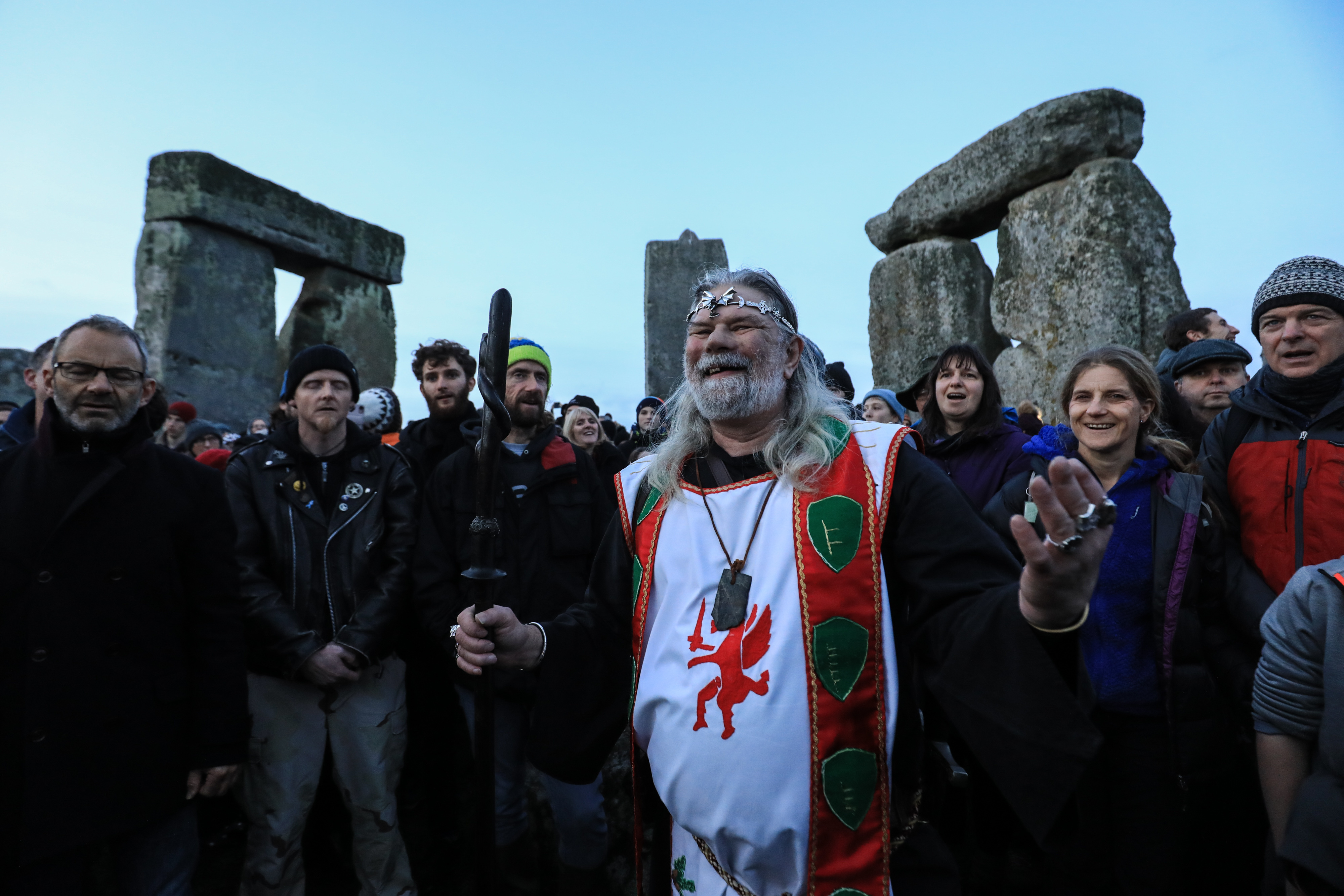Secular v. sectarian Christmas displays: What is the obligation of public schools to be welcoming?
I walked into one of the Iowa Area Education Agencies (AEAs) last week and saw a tree in the foyer that was decorated with lights, tinsel, ornaments, a star on top, and presents underneath. The area around the receptionist’s desk was decorated with red and green garland; a Santa Claus candy dish; little stockings with names on them; Santa Claus nesting dolls; and a smaller tree also decorated with lights, ornaments, and a star on top. On the door to the receptionist’s area was a green wreath and a chalkboard sign with a snowman on it that said ‘11 days ‘til Christmas!’
As I walked past the holiday displays, I was confronted yet again with my annual concerns about public schools, religion, and inclusiveness. I’ve blogged about this the past two Decembers:
- 2007 – Bah, humbug? (and its 24 comments)
- 2008 – It’s time to play … Spot that holiday violation 2008! (and its 62 comments)
- Hanging pictures of reindeer, bells, other non-religious symbols.
- Sponsoring a “giving tree” on which students may hang hats, mittens, scarves, other items for donation to less fortunate persons.
- Handing out candy. [Remember, this does not violate either the First Amendment or state nutrition guidelines (if not provided by the school; check to see if it would violate a local school wellness policy!]
- Sponsoring sleigh rides.
The Iowa Department of Education speaks
This year I decided to ask an Iowa school law attorney what he thought about what I saw at the AEA. He referred me to the December issue of the Iowa Department of Education’s School Leader Update monthly newsletter, which states on page 11 (in part):
Secular aspects of Christmas. The non-religious aspects of Christmas may be part of students‘ lives at school to the extent that they do not otherwise violate school rules. For example, the following are permissible activities (inasmuch as they do not violate the First Amendment):
Class parties. Focus on the secular side of Christmas. Excuse all children whose families object to celebrating Christmas in any way, both those families who are of other faiths and those who are Christian, but who find the commercial aspects of the holiday to be offensive.
. . .
Displays. Aside from the utter schizophrenic nature of displays that commingle nativity scenes with Santa, displays that do not overemphasize the religious side of Christmas have been ruled by courts to not violate the First Amendment. Nativity scenes standing alone have been struck down by the courts.
Christmas trees. There is nothing sectarian about a “Christmas” tree. (Go ahead…show me where the New Testament refers to it!) The tree is not the problem. The ornamentation could be. Make sure that the ornaments are not all (or not primarily) representative of the Christian faith. Better yet, see “Secular aspects of Christmas” above.
Scram, kids. We’re celebrating!
So it appears that the Iowa Department of Education has no problem with secular Christmas displays, trees, or celebrations in public schools [and even gets a little cheeky about it; read that New Testament comment again!]. The Department says that class Christmas parties are not an issue: simply excuse objecting students from the party. [Sorry, kids. We’re all now going to celebrate the secular aspects of a sectarian holiday. If you don’t like it, we’ll send you to some other location in the building while we engage in our revelry. You can come back when we’re done with our merriment.]
I don’t fully agree with some aspects of the Department’s legal analysis, but that’s okay. Some of the finer points of holiday displays and celebrations are yet to be determined by courts. What I’m more concerned about, however, is the issue of inclusiveness.
Serving all, but only welcoming to some
Last year in the very active discussion to my post on this topic, I said:
I notice that no one’s taken up my inclusiveness concern (and by that I mean schools’ moral, ethical, professional, and societal responsibility to provide welcoming learning environments for ALL kids).
The obligation of public schools to be welcoming to students, families, and community members appears to be lost in all the legalistic wrangling. We can dance on the legal head of the pin all we want, but the bottom line is that all communities – even really homogenous ones like those that exist in many rural Iowa communities – have some members who are Jews, Muslims, Jains, agnostics, Hindus, Baha’i, atheists, etc. They also have members who may be Christian but who aren’t of the dominant denomination(s) in the local area and thus may object to particular expressions of belief. Many of these members are uncomfortable with public schools expressing even the secular aspects of sectarian holidays because there’s often no concurrent recognition (in December or at other times) of their own holidays. They don’t feel that their own beliefs are validated, they don’t feel included, and they don’t feel welcome.
It’s not about declaring a ‘war on Christmas.’ Heck, I like Christmas; my family celebrates it every year. Much of this isn’t even about religion. Instead it’s about kindness and respect. Why do so many schools talk all year (and even implement curricular programs) about being kind, respectful, and inclusive and then get their backs up and get defensive about their right to do this? Don’t they see the disconnects between their rhetoric and their actions? Why on earth are they fighting so hard to send messages of noninclusiveness?
As a former Social Studies teacher, attorney, school law professor, and American citizen, I believe that public school administrators and the organizations that they lead have an obligation to recognize and honor the ideological, cultural, and religious diversity that exists in our country. We don’t do that by allowing holiday displays that scream CHRISTMAS! and nothing else. Every December this is an issue, and every December I feel sorry for the students and families who are of minority faiths or no faith because I know that many schools are doing very little to help them feel welcome too during this supposedly-festive time. In a country that is the standard-bearer for the world when it comes to ideological and religious diversity, allowing this sort of activity just doesn’t sit well with me. Even if it’s legal, that doesn’t mean it’s morally right for the members of our community that we choose to ignore.
Okay, I’ve said my piece. Have at me…
P.S. Also see this story about a preschooler being suspended for having long hair for an altogether different example of a school’s noninclusiveness.




